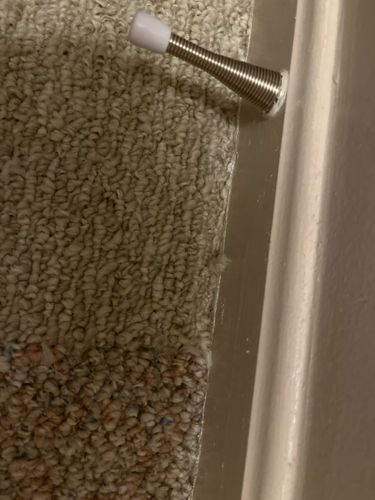Carpet Beetle (likely Varied Carpet Beetle or Black Carpet Beetle)
Scientific Name: Likely *Anthrenus verbasci* (Varied Carpet Beetle) or *Attagenus unicolor* (Black Carpet Beetle), but precise species cannot be determined from the image as the visible organism appears to be a very small larva or shed skin, not fully identifiable.
Order & Family: Order: Coleoptera, Family: Dermestidae
Size: Larvae typically range from 2-5 mm in length. Adult carpet beetles are small, usually 2-4 mm long.

Natural Habitat
Indoors, carpet beetles are common pests in homes, museums, and warehouses. They target areas with animal-derived products, such as carpets (especially under furniture), rugs, woolen fabrics, furs, taxidermy, stored foods, and lint accumulations. Outdoors, adult beetles can be found on flowering plants.
Diet & Feeding
Larvae feed on a variety of animal and plant products, including wool, silk, feathers, fur, leather, museum specimens, dried food products, and even lint and pet hair. They are known for damaging carpets, clothing, and upholstered furniture. Adult carpet beetles feed on pollen and nectar from outdoor plants.
Behavior Patterns
Carpet beetle larvae typically avoid light and prefer to hide in dark, undisturbed areas. They are slow-moving and can often be found in cracks, crevices, under carpets, or in closets. Adults are attracted to light and are often found near windows. The life cycle can take several months to a year depending on conditions, with larvae doing the most damage.
Risks & Benefits
Potential risks include significant damage to natural fibers (carpets, clothing, furniture) and stored food products. Some individuals may experience allergic reactions (dermatitis) to bristles shed by the larvae. They are not known to bite humans or transmit diseases. There are no notable benefits in an indoor pest context.
Identified on: 8/12/2025